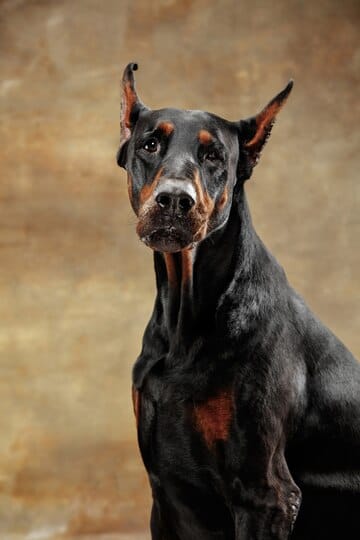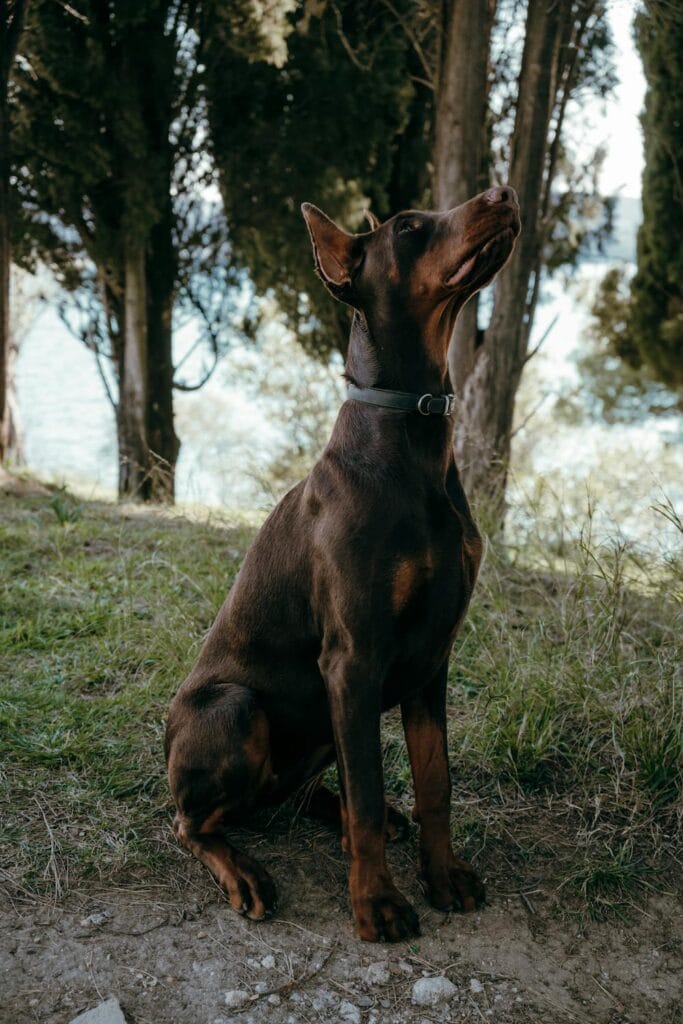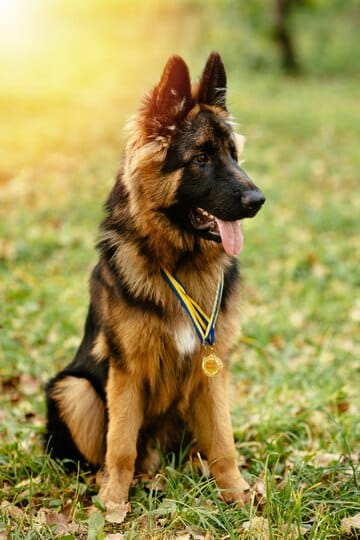- Introduction: Meet the Mighty Canis Panther 🐕
- What is a Canis Panther? 🤔
- The Basics of Canine Bite Force 📊
- Canis Panther Bite Force: The Numbers 🔢
- Canis Panther Bite Force vs. Other Breeds 🥊
- The Science Behind the Bite: Anatomy of Power 🦴
- Factors Influencing Canis Panther Bite Force 🎭
- Bite Force Through the Ages: From Puppy to Adult 🐾
- The Power of the Panther: Real-World Applications 🌍
- Responsible Ownership: Harnessing the Power 🦸♂️
- Myths and Misconceptions: Separating Fact from Fiction 🕵️♂️
- Comparing Apples and Oranges: Bite Force in the Animal Kingdom 🦁
- The Future of Bite Force Research 🔬
- Training and Bite Force: Optimizing Natural Strength 🏋️♂️
- Nutrition and Dental Health: Fueling the Force 🥩
- Canis Panther Bite Force in Popular Culture 🎬
- Legal Considerations: The Responsibility of Power 👨⚖️
- The Ethics of Breeding for Bite Force 🤔
- Bite Force in Veterinary Medicine 🩺
- Frequently Asked Questions ❓
- Conclusion: Respecting the Power of the Panther 🐾
Introduction: Meet the Mighty Canis Panther 🐕
If you’ve ever wondered about the Canis Panther bite force, you’re in for a treat! We’re about to dive deep into the jaws of the Canis Panther, exploring everything from their basic anatomy to the science behind their impressive bite. Buckle up, because this is going to be one jaw-dropping ride! 🎢
What is a Canis Panther? 🤔
Before we sink our teeth into the topic of bite force, let’s get acquainted with our star player. The Canis Panther is a relatively new designer breed, created in the 1970s by Scorpio Jones. This impressive canine is a mix of four powerful breeds:
- Great Dane
- American Staffordshire Terrier
- Labrador Retriever
- German Shepherd
Imagine combining the strength, intelligence, and loyalty of these breeds into one package. That’s the Canis Panther for you! 🎁
The Basics of Canine Bite Force 📊
Before we dive into the specifics of the Canis Panther’s bite force, let’s chew on some general information about canine bite force.
What is Bite Force? 💪
Bite force is the amount of pressure exerted by an animal’s jaws when biting. It’s typically measured in pounds per square inch (PSI) or Newtons (N). For our discussion, we’ll stick with PSI as it’s more commonly used when talking about dog bite force.
Factors Affecting Bite Force 🧠
Several factors influence a dog’s bite force:
- Skull shape and size: Generally, dogs with broader, shorter skulls (like bulldogs) have stronger bites relative to their size.
- Body size: Larger dogs typically have stronger bites.
- Jaw muscles: The strength and size of jaw muscles play a crucial role.
- Teeth shape and arrangement: Sharp, interlocking teeth can increase bite effectiveness.
- Motivation: A dog’s emotional state can affect its bite strength.
Canis Panther Bite Force: The Numbers 🔢
Now, let’s get to the meat of the matter – just how strong is a Canis Panther’s bite?
Canis Panther Bite Force PSI
While there isn’t extensive scientific data specifically on Canis Panthers due to their rarity, we can make educated estimates based on their parent breeds and physical characteristics.
The estimated bite force of a Canis Panther ranges from 200 to 400 PSI.
To put this into perspective, let’s look at a comparison chart:
| Breed | Estimated Bite Force (PSI) |
|---|---|
| Canis Panther | 200-400 |
| Great Dane | 238 |
| German Shepherd | 238 |
| Labrador Retriever | 230 |
| American Staffordshire Terrier | 235 |
As we can see, the Canis Panther’s estimated bite force is in line with or potentially higher than its parent breeds. This is likely due to the combination of strong jaw muscles inherited from its diverse genetic background.
Canis Panther Bite Force vs. Other Breeds 🥊
To really appreciate the Canis Panther’s bite force, let’s see how it stacks up against some other well-known breeds:
| Breed | Estimated Bite Force (PSI) |
|---|---|
| Canis Panther | 200-400 |
| Pitbull | 235-330 |
| Rottweiler | 328 |
| Kangal | 743 |
| Human | 162 |
Canis Panther Bite Force vs. Pitbull 🐶
One common comparison is between the Canis Panther and the Pitbull. Let’s break it down:
- Canis Panther: 200-400 PSI
- Pitbull: 235-330 PSI
As we can see, there’s potentially significant overlap in their bite force ranges. The Canis Panther’s upper range estimate exceeds that of the Pitbull, but individual dogs may vary.
The Science Behind the Bite: Anatomy of Power 🦴
To truly understand the Canis Panther’s impressive bite force, we need to take a closer look at the anatomy behind it.
Jaw Structure 🦷
The Canis Panther inherits a robust jaw structure from its parent breeds. Key features include:
- Strong temporomandibular joint (TMJ)
- Well-developed masseter muscles
- Sturdy zygomatic arch (cheekbone)
Teeth 😁
The Canis Panther typically has 42 teeth, including:
- Incisors: 12
- Canines: 4
- Premolars: 16
- Molars: 10
Their canine teeth are particularly impressive, designed for gripping and tearing.
Muscles 💪
The main muscles involved in biting are:
- Temporalis muscle
- Masseter muscle
- Medial pterygoid muscle
In the Canis Panther, these muscles are well-developed, contributing to their strong bite.
Factors Influencing Canis Panther Bite Force 🎭
Several factors can affect an individual Canis Panther’s bite force:
- Age: Bite force typically increases as a dog matures, peaking in adulthood.
- Size: Larger individuals generally have stronger bites.
- Health: Dental issues or jaw injuries can reduce bite force.
- Training: Proper bite training can optimize a dog’s natural strength.
- Genetics: Individual genetic variations can influence muscle development and jaw structure.
Bite Force Through the Ages: From Puppy to Adult 🐾
Let’s take a journey through the life of a Canis Panther and see how their bite force develops:
| Age | Estimated Bite Force (PSI) | Notes |
|---|---|---|
| 8 weeks | 20-40 | Puppy teeth, learning to use jaws |
| 6 months | 100-150 | Adult teeth coming in, jaw strengthening |
| 1 year | 150-250 | Nearing adult strength |
| 2-5 years | 200-400 | Peak adult strength |
| 6+ years | 180-350 | May decrease slightly with age |
Remember, these are estimates and individual dogs may vary.
The Power of the Panther: Real-World Applications 🌍
Now that we understand the impressive bite force of the Canis Panther, let’s explore how this translates to real-world scenarios.
Working Roles 👷♂️
The Canis Panther’s strong bite makes them excellent candidates for certain working roles:
- Protection work: Their powerful bite can be a deterrent in security situations.
- Search and rescue: Strong jaws can help in moving debris or carrying equipment.
- Competitive sports: Sports like Schutzhund can showcase their abilities.
Everyday Life 🏠
In daily life, a Canis Panther’s strong bite means:
- They can easily destroy tough toys 🧸
- Chews and bones should be carefully selected for durability
- Extra care is needed during play to prevent accidental injury
Responsible Ownership: Harnessing the Power 🦸♂️
Owning a dog with such a powerful bite comes with great responsibility. Here are some tips for Canis Panther owners:
- Early socialization: Expose your dog to various people, animals, and situations from a young age.
- Consistent training: Use positive reinforcement to teach bite inhibition and control.
- Proper exercise: A well-exercised dog is less likely to exhibit problematic behaviors.
- Regular vet check-ups: Keep an eye on dental health to maintain optimal bite force and prevent issues.
- Appropriate toys: Provide durable toys that can withstand your dog’s powerful jaws.
Myths and Misconceptions: Separating Fact from Fiction 🕵️♂️
Let’s debunk some common myths about dog bite force, particularly relating to the Canis Panther:
Myth 1: Bite Force Determines Aggression ❌
Fact: Bite force and aggression are not directly related. A dog’s temperament, training, and socialization are much more important factors in determining behavior.
Myth 2: Locking Jaws 🔒
Fact: No dog, including the Canis Panther, has a physically locking jaw. This is a common misconception often applied to breeds with strong bites.
Myth 3: Bigger Always Means Stronger ❌
Fact: While size often correlates with bite force, it’s not the only factor. Jaw structure, muscle development, and even breed characteristics play significant roles.
Comparing Apples and Oranges: Bite Force in the Animal Kingdom 🦁
To truly appreciate the Canis Panther’s bite force, let’s zoom out and look at some other animals:
| Animal | Estimated Bite Force (PSI) |
|---|---|
| Canis Panther | 200-400 |
| Lion | 650 |
| Grizzly Bear | 975 |
| Hippopotamus | 1,821 |
| Saltwater Crocodile | 3,700 |
| Tyrannosaurus Rex (extinct) | 12,800 |
As we can see, while the Canis Panther’s bite is impressive in the canine world, it’s modest compared to some of nature’s heavyweights!
The Future of Bite Force Research 🔬
As the Canis Panther breed becomes more established, we can expect more specific research into their capabilities. Future studies might include:
- Precise measurements of Canis Panther bite force
- Comparisons between different lineages within the breed
- Studies on how training affects bite force development
- Research on bite force in relation to the breed’s working roles
Training and Bite Force: Optimizing Natural Strength 🏋️♂️
While a dog’s maximum bite force is largely determined by genetics and physical structure, training can help a Canis Panther use its natural strength effectively and safely. Here are some training tips:
- Bite inhibition training: Teach your dog to control the pressure of its bite from puppyhood.
- Tug games: Structured tug play can help develop jaw strength and control.
- Obedience training: A well-trained dog is more likely to use its strength appropriately.
- Agility work: This can improve overall body strength and coordination.
Remember, the goal is not to increase bite force, but to ensure your Canis Panther can control its natural strength.
Nutrition and Dental Health: Fueling the Force 🥩
A strong bite relies on more than just muscles and bones. Proper nutrition and dental care are crucial for maintaining optimal bite force. Here are some tips:
- High-quality protein: Supports muscle development and maintenance.
- Calcium and phosphorus: Essential for strong bones and teeth.
- Dental chews: Help clean teeth and exercise jaw muscles.
- Regular brushing: Prevents dental issues that could weaken bite force.
- Yearly dental check-ups: Catch and address any issues early.
Canis Panther Bite Force in Popular Culture 🎬
While the Canis Panther isn’t as well-known as some other breeds, its impressive capabilities have not gone unnoticed:
- Movies: Though not specifically featured, the idea of designer guard dogs often draws inspiration from breeds like the Canis Panther.
- Books: Some thriller novels feature powerful guard dogs that resemble the Canis Panther’s capabilities.
- Social media: Videos showcasing the strength and agility of Canis Panthers often go viral.
Legal Considerations: The Responsibility of Power 👨⚖️
Owning a dog with a powerful bite like the Canis Panther comes with legal responsibilities:
- Insurance: Some home insurance policies may have breed-specific clauses.
- Local laws: Check your local regulations regarding powerful dog breeds.
- Liability: Owners are typically responsible for any damage or injury caused by their dogs.
Always prioritize responsible ownership and proper training to prevent any issues.
The Ethics of Breeding for Bite Force 🤔
The creation of breeds like the Canis Panther raises ethical questions about breeding for specific traits:
- Health concerns: Prioritizing physical traits can sometimes lead to health issues.
- Responsible breeding: Ethical breeders focus on overall health and temperament, not just physical capabilities.
- Breed purpose: Consider whether breeding for strong bites aligns with the dog’s intended role as a companion animal.
Bite Force in Veterinary Medicine 🩺
Understanding bite force is crucial in veterinary medicine:
- Dental procedures: Vets must consider bite force when performing oral examinations or surgeries.
- Anesthesia: Proper intubation techniques are crucial for dogs with strong bites.
- Post-operative care: Special considerations may be needed for jaw or dental surgeries.
Frequently Asked Questions ❓
- Q: Is the Canis Panther’s bite force dangerous?
A: Any dog’s bite can be dangerous. The Canis Panther’s strong bite emphasizes the need for proper training and responsible ownership. - Q: Can I measure my Canis Panther’s bite force at home?
A: It’s not recommended to try measuring bite force at home. Professional equipment and expertise are required for accurate and safe measurements. - Q: Does a strong bite force mean my Canis Panther will be aggressive?
A: No, bite force and aggression are not directly related. Proper training and socialization are key to a well-behaved dog. - Q: How can I strengthen my Canis Panther’s jaw muscles?
A: Regular play with appropriate chew toys and structured tug games can help maintain jaw strength. However, focus on control rather than increasing power. - Q: Are Canis Panthers good family dogs despite their strong bite?
A: With proper training and socialization, Canis Panthers can make excellent family companions. Their loyalty and intelligence are assets when raised responsibly. - Q: How does the Canis Panther’s bite force compare to wild animals?
A: While impressive for a domestic dog, the Canis Panther’s bite force is much lower than that of large wild predators like lions or bears. - Q: Can a Canis Panther’s bite force weaken with age?
A: Yes, like in humans, a dog’s bite force can decrease somewhat with age due to muscle loss and potential dental issues. - Q: Are there any special considerations for feeding a dog with such a strong bite?
A: Use durable food and water bowls, and be cautious when hand-feeding treats. Always supervise interactions with children during feeding times. - Q: How does bite inhibition training work for a Canis Panther?
A: Bite inhibition training teaches dogs to control the pressure of their bite. It typically starts in puppyhood and involves consistent feedback during play. - Q: Can a Canis Panther’s bite force vary between individuals of the breed?
A: Yes, individual factors like size, age, health, and genetics can all influence an individual dog’s bite force.
Conclusion: Respecting the Power of the Panther 🐾
The Canis Panther’s impressive bite force is a testament to the breed’s strength and capabilities. From its origins as a designer breed to its potential applications in various working roles, this powerful canine continues to captivate dog enthusiasts.
Remember, with great power comes great responsibility. Owning a Canis Panther, or any dog with a strong bite, requires commitment to proper training, socialization, and responsible ownership. When raised with love, care, and respect for their abilities, these dogs can be loyal, intelligent, and impressive companions.
Whether you’re a current Canis Panther owner, a prospective owner, or simply an admirer of these powerful dogs, we hope this guide has given you a comprehensive understanding of their bite force and the factors surrounding it.
As we continue to learn more about this relatively new breed, one thing is certain: the Canis Panther is a remarkable example of canine strength and a reminder of the incredible diversity within the world of dogs. 🐕💪🌟































